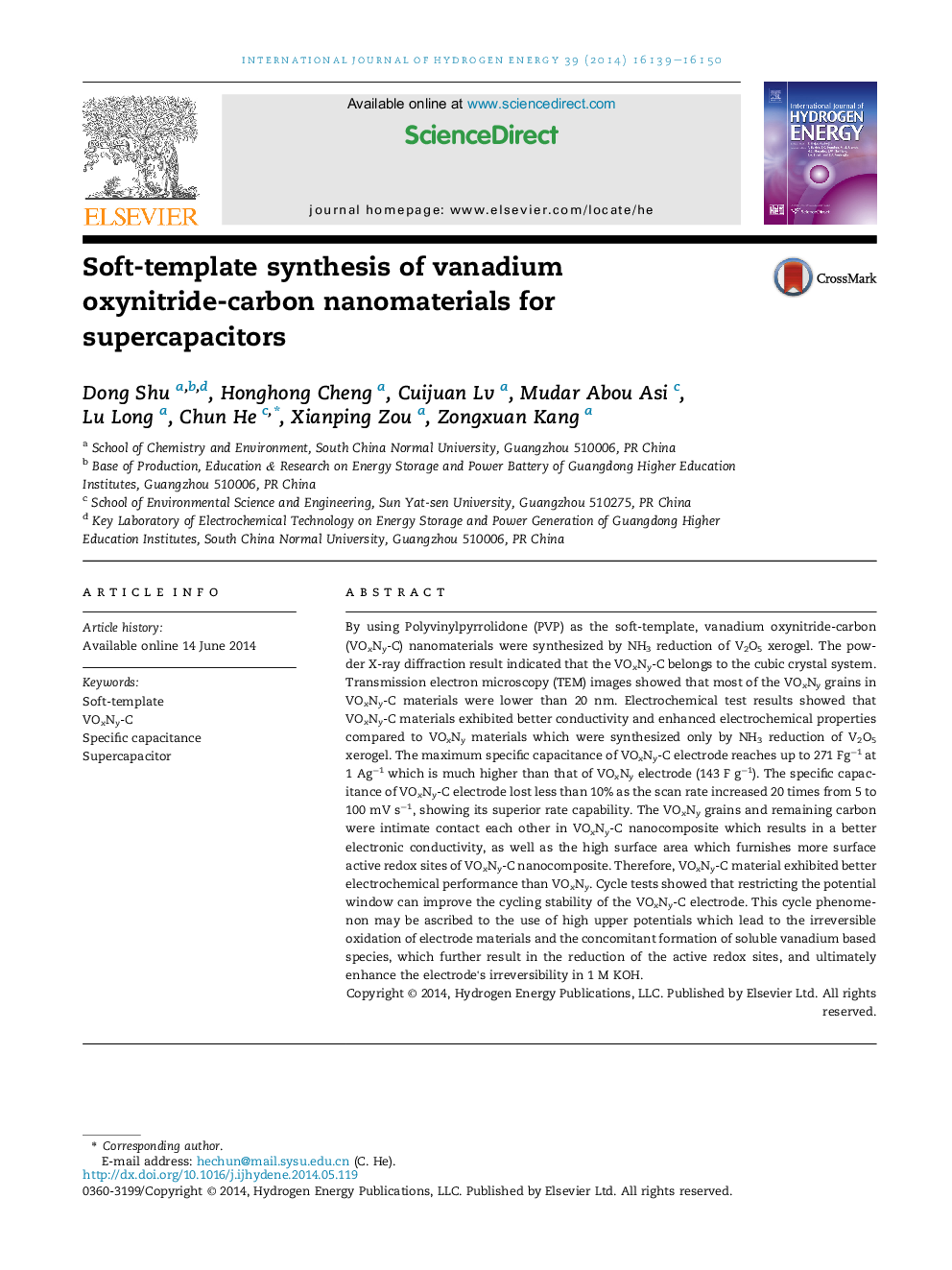| Article ID | Journal | Published Year | Pages | File Type |
|---|---|---|---|---|
| 1272464 | International Journal of Hydrogen Energy | 2014 | 12 Pages |
•Vanadium oxynitride-carbon (VOxNy-C) materials were prepared by soft-template method.•The maximum specific capacitance (SC) of VOxNy-C is 271 Fg−1 at 1 Ag−1•The SC of VOxNy-C lost less than 10% as the scan rate increases from 5 to 100 mV s−1•Restricting the potential window can increase the cycling stability of VOxNy-C.
By using Polyvinylpyrrolidone (PVP) as the soft-template, vanadium oxynitride-carbon (VOxNy-C) nanomaterials were synthesized by NH3 reduction of V2O5 xerogel. The powder X-ray diffraction result indicated that the VOxNy-C belongs to the cubic crystal system. Transmission electron microscopy (TEM) images showed that most of the VOxNy grains in VOxNy-C materials were lower than 20 nm. Electrochemical test results showed that VOxNy-C materials exhibited better conductivity and enhanced electrochemical properties compared to VOxNy materials which were synthesized only by NH3 reduction of V2O5 xerogel. The maximum specific capacitance of VOxNy-C electrode reaches up to 271 Fg−1 at 1 Ag−1 which is much higher than that of VOxNy electrode (143 F g−1). The specific capacitance of VOxNy-C electrode lost less than 10% as the scan rate increased 20 times from 5 to 100 mV s−1, showing its superior rate capability. The VOxNy grains and remaining carbon were intimate contact each other in VOxNy-C nanocomposite which results in a better electronic conductivity, as well as the high surface area which furnishes more surface active redox sites of VOxNy-C nanocomposite. Therefore, VOxNy-C material exhibited better electrochemical performance than VOxNy. Cycle tests showed that restricting the potential window can improve the cycling stability of the VOxNy-C electrode. This cycle phenomenon may be ascribed to the use of high upper potentials which lead to the irreversible oxidation of electrode materials and the concomitant formation of soluble vanadium based species, which further result in the reduction of the active redox sites, and ultimately enhance the electrode's irreversibility in 1 M KOH.
